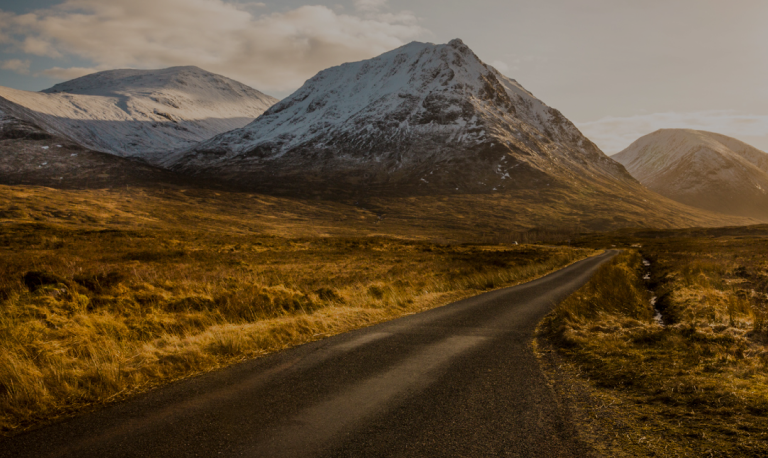Discovering the Secrets of Dumfries and Galloway
A place filled with scarred castles, ancient burial sites, mysterious stone circles and once splendidly adorned abbeys.
A land that holds memories of battles long past, the hiding place of Robert the Bruce, the resting place of Robert Burns, and the last night Mary Queen of Scots spent in Scotland.
A reimagined future of thrilling outdoor pursuits, modern art landscapes, and the chance to gaze at the stars and the wonders of other worlds.
This beautiful corner of south west Scotland is often overlooked, but give it some time and attention and you will be richly rewarded. This is Dumfries & Galloway.
Castles & Abbeys
Scotland’s story stretches back thousands of years and there are reminders present in much of Dumfries & Galloway. Here, you can travel back in time to glimpse at most chapters of Scotland’s past.
The medieval stronghold of Caerlaverock Castle is one of my favourite castles in Scotland. Its current appearance comes down to its role in the Wars of Independence and its close proximity with England. With a unique triangular structure and impressive gate when you approach, it may be smaller than other castles but it has the feel of a lightweight boxer waiting to rush at you out of its corner. I’m not sure if the moat is there to protect the castle or its attacker …
One of the most stunning castles in the country is Drumlanrig Castle – a 17th century Renaissance design with surrounding Victorian gardens. A true gem and pleasure to visit.
The order of Cistercian monks left their mark in Galloway, founding three abbeys in the area by 1273, including the charmingly named Sweetheart Abbey (pictured below) and Dundrennan Abbey.
The latter’s most famous guest was Mary Queen of Scots. After her escape from Lochleven Castle and her decision to flee to the ‘safety’ of her cousin Elizabeth I’s England, she stayed at the Abbey the evening before crossing to England. This would be the last night Mary would spend in Scotland, as she was subsequently imprisoned for years and executed south of the border.
Ancient History in the Land
My favourite ancient site in the region is the Torhouse Stone Circle. Built during the Bronze Age, 19 large granite boulders make up the site, with 3 upright stones in the centre. What is most interesting is that this style is more commonly found in north east Scotland.
A short distance away are two burial cairns – Cairnholy I & II, both rather different in appearance and well worth visiting. The stones at Cairnholy I take an almost skeletal appearance, jutting jaggedly out of the ground, with every angle a different picture. At Cairnholy II the stones lie in a more sacrificial position, with a main slab balancing on supporting stones. Make sure not to visit during a full moon …
Rispain Camp near Whithorn is a fortified earthwork that was once believed to be either a Roman fort or medieval site due to how well it was preserved. However on recent excavations, archaeologists now believe the site actually dates back to the Iron Age. You can still visit and walk around the ramparts.
Famous Figures
Dumfries & Galloway is closely associated with one of Scotland’s most famous kings and heroes – Robert the Bruce. His ancestral lands can be found in the Annandale area, and this is where he murdered John Comyn in 1306 to set his story into motion. The Bruce also had his first military success at Loch Trool, where a large granite boulder now stands to celebrate his victory.
From the starting point of one of Scotland’s national treasures to the ending of another – the final resting place of our national poet, Robert Burns, is in the market town of Dumfries. It is here that Burns worked as an Excise Officer making sure that people paid their taxes (particularly those related to alcohol), although I’m sure he would have looked upon the recently re-established Annandale Whisky Distillery favourably!
Burns’ white-domed mausoleum stands out against the surrounding red stone, and inside is a statue of Burns perched against a plough gazing up at his muse Coila.
An Outdoor Wonderland
As well as stunning coastal scenery which you can explore along the recently established South West Coastal 300 driving route, you can also venture inland to the Galloway Forest Park where over 800,000 visitors each year take part in activities ranging from exhilarating downhill biking to forest trails, and stunning lochs and mountain walks.
Dark Skies
The excitement doesn’t end when darkness falls. The Galloway Forest Park has Dark Sky Park status as the light pollution is low to non-existent. Here you can gaze at distant planets, shining stars, and see the Milky Way spread out over the sky. An ‘out of this world’ experience.
The Dark Sky Park allows you to see the night sky as our ancestors would have. With this clean canvas, ancient stone monuments can be looked upon with fresh eyes and reimagined in our time. Crawick Multiverse is a unique land art project where striking artforms have been created using earth and stone. These give a nod to our past, but look forward in a modern and enlightening way.
These are but a few of the sites and possibilities that await you in Dumfries & Galloway. Ancient stone circles and tombs, abbeys and castles, legendary figures, and a landscape to take your breath away – and you’ll have it almost all to yourself!
Jason Martin
P.S. Dumfries & Galloway forms part of our Burns Country & the Scottish Bordersself-drive itinerary – a wonderful way to discover some of Scotland’s ‘hidden gems’. If you’re looking for something a little more active, why not hike through this spectacular region on the Southern Upland Way?


